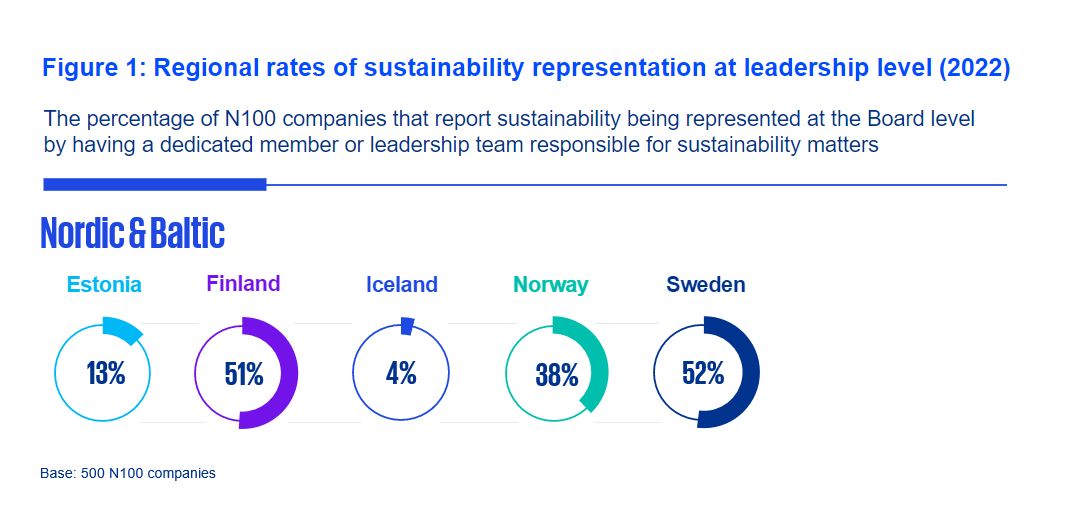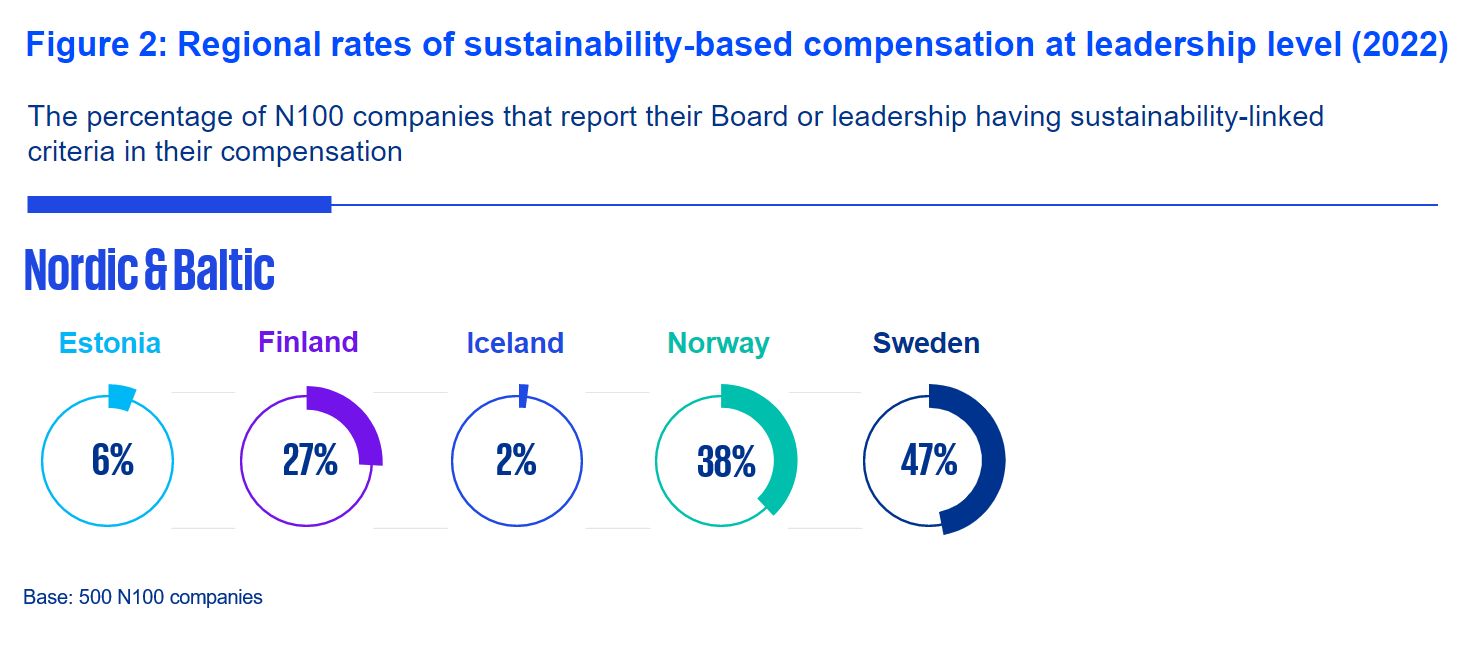KPMG recently published a global sustainability reporting survey. Norway, Iceland, Sweden, Estonia and Finland, as KPMG’s member firms, also participated in the study. In collaboration, we will write a three-part blog series in which we analyse the results of the report from the perspective of the Nordic and Baltic regions. Welcome to read and discuss. If you have any questions, please don’t hesitate to reach us.
How environmental, social and governance (ESG) matters are managed determines organizational responsibility and oversight – from top to bottom and across business divisions and geographies. Interestingly, ESG governance is an under-disclosed area, despite it being one of few outlets for stakeholders to scrutinize how ESG is embedded into business decision-making.
Without ESG governance disclosures, there is little understanding of organization-wide reporting lines or how ESG relates to leadership responsibilities and compensation, let alone frequency of ESG-related meetings and topics discussed. More comprehensive reporting facilitates understanding of how ESG is driven forward, holding the company accountable on its strategic ESG approach and performance.
Reporting indicates clear development potential
The 12th edition of KPMG Survey of Sustainability Reporting reviewed for the first time if sustainability is represented at the Board level by having a dedicated member or leadership team responsible for ESG. Our findings show that only one-third (34 percent) of top 100 businesses in each of 58 countries, territories, and jurisdictions (the N100) have such senior ESG oversight in place. This is surprising given that sustainability is increasingly seen critical to long-term financial success and meeting stakeholder expectations.
The top 10 countries, territories and jurisdictions that have sustainability representation at leadership level are from Europe and Asia. In Europe, UK and France display the strongest uptake with reporting rates of 83 percent and 75 percent, respectively. Nordic and Baltic companies have fallen behind and are, in the European context, average at best.

Whilst these figures represent reporting rates, they go to show that leadership-level ESG representation can be better leveraged. It can help company leadership have the required expertise to make informed decisions about ESG risks, opportunities, and impacts, as well as assist in ensuring that ESG conversations move in the direction of change instead of sheer compliance.
Compensation - a key to concrete actions and results
Leadership-level representation is a move towards ensuring that ESG strategy execution is closely monitored and measured. A logical next step is to incentivize action by linking sustainability goals with compensation.
Compensation plays a key role in creating incentives that change behavioral patterns among employees and within the organization, but have Nordic and Baltic companies embedded sustainability in their compensation schemes?

Based on the above, companies have not yet included sustainability-linked criteria in leadership-level compensation. Norway and Sweden stand out positively, though their reporting rates are no match to leaders like Singapore and France (67 percent). A deep dive into data reveals that high-emitting sectors are likelier to have ESG criteria in their compensation schemes than others.
Soon, companies under the Corporate Sustainability Reporting Directive (CSRD) must report about the integration of sustainability strategies and performance in their incentive schemes. GRI Standards, too, call for disclosures on compensation policies and processes. Reporting about sustainability-linked compensation, or at least being transparent about it, is on the rise.


